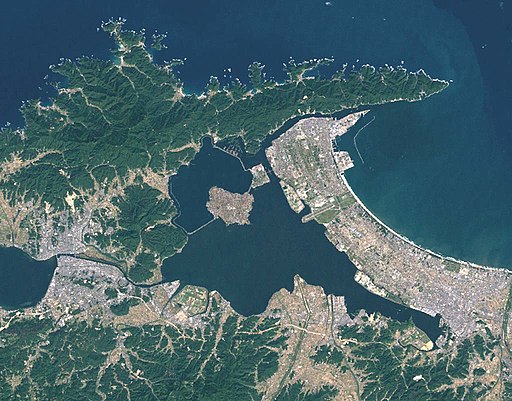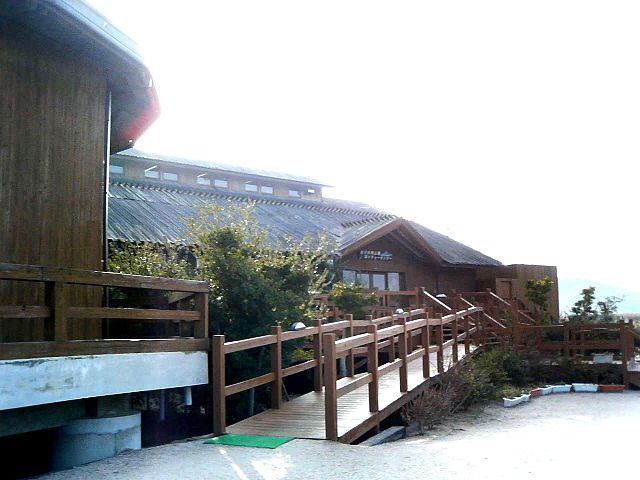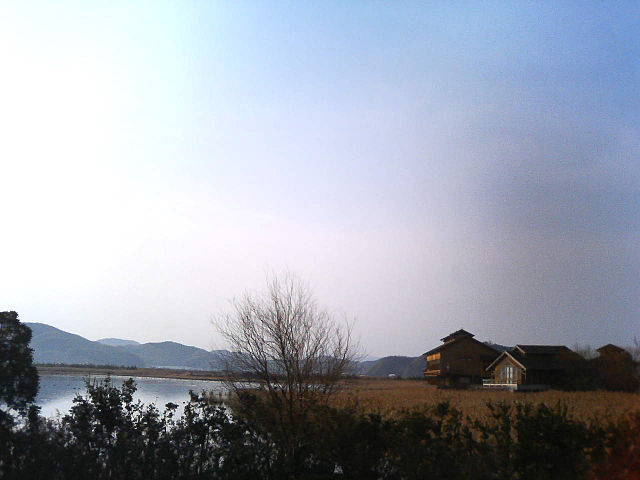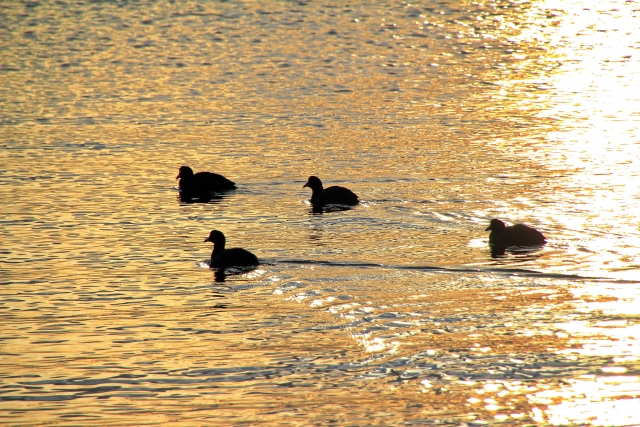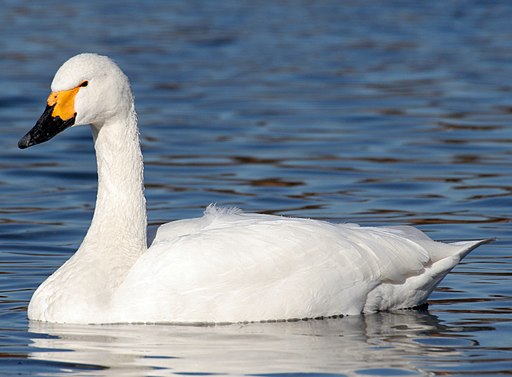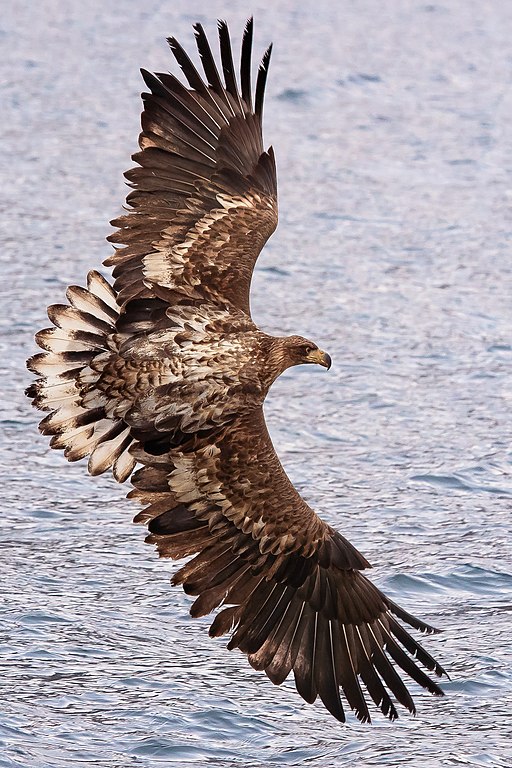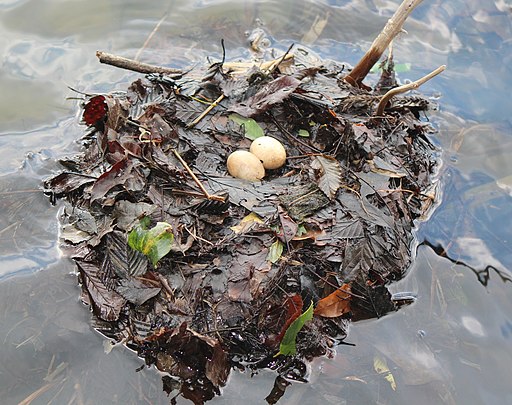

Spreading Wings over Tottori
The name Tottori (written 鳥取 in Japanese) is made up of the kanji characters meaning 鳥 ‘bird’, and取 which means ‘to get’. The name is said to have come from an ancient community that lived in the vicinity of Mount Kyusho. They were known as the ‘Totoribe’ (written 鳥取部 in Japanese) and made their living by catching waterfowl, which was found in abundance in the region. Though the Totoribe people no longer exist, birds continue to be deeply intertwined with the prefecture. Lake Nakaumi is a brackish lake that—thanks to its high salinity—supports a distinct and diverse natural environment that sets it apart from nearby lakes. Plants, fish, insects, and of course, birds all thrive in and around the lake. It is one of the most important and largest wintering spots in Japan, especially for the East Asian population of Tundra Swans. While the Tundra Swan lives and breeds mainly throughout Eurasia and North America, it spends its winters in lakes, marshes, and lakes in Japan. Though they can be found in water bodies along the Japan Sea, Nakaumi is special as it is the Tundra Swan’s southernmost wintering grounds. Aside from Tundra Swans, over 200 species of wild birds have been identified in Nakaumi; these birds can be either permanent or transient residents of the lake. There were plans in the 1960s to reclaim land from Nakaumi to create new farmlands and turn the lake into a freshwater lake but the plan was cancelled, thanks to efforts by the local people and the government in recognising the importance of the biodiversity present in this lake. In 2005, Nakaumi was officially designated as a Ramsar site. This means it is a wetland site that is designated to be of international importance, especially as a habitat for waterfowl. Thanks to these efforts, Nakaumi has remained a safe haven for bird, and has become a must-visit site for birdwatchers. One spot on the lake in particular is held in high repute amongst birdwatchers. The Yonago Waterbirds Sanctuary sits on the eastern end of Nakaumi—of the 200 species that have been identified at the lake, the sanctuary itself affords visitors the opportunity to see approximately 130 of these bird species! This can be as many as 10,000 birds at any one time (particularly during the winter) the sight of which is bound to inspire awe and delight in the hearts of birdwatchers, and nature lovers in general! As mentioned before, Tundra Swans visit Nakaumi every winter. Approximately 1000 of these swans gather here, between mid-October to end-March to feed. Birdwatchers are in for a treat if they visit early in the morning or around sunset—large flocks swoop in formation as they move from shore to shore in Nakaumi in search of spots to feed in. Besides the Tundra Swan, there are many other birds that birdwatchers can catch glimpses of at the sanctuary throughout the year. For example, the Northern Pintail—a type of long-necked duck—also visits Nakaumi in the winter months. Once it gets closer to spring, the males begin courting a mate with intricate dances and their elegant plummage. They flock close to the sanctuary and as such, can be easily spotted by visitors even without any special equipment. Magnificent birds of prey can also be spotted at the sanctuary. The White-tailed Eagle is the largest of all raptors that prey in Nakaumi. They arrive at the sanctuary late in the season and spend most of their time on the outer embankment of the sanctuary, or perched in trees on uninhabited islands in the lake. They are often opportunistic feeders, flying into the sanctuary to feed on carcasses of dead birds or stealing the prey caught by other raptors. Although Nakaumi is primarily known as a wintering ground for migratory birds, waterfowl can still be seen in other seasons. Little Grebes can be seen building nests on the water’s edge during the summertime. Chicks can swim soon after they are hatched, but it is common to see them being carried on the backs of adult little grebes! Interestingly, the floating nests of the little grebe have become a kigo, or seasonal word, that is used in haiku poetry. In autumn, the sanctuary plays host to the Greater White-fronted Goose. These cautious geese visit every year in October, though they tend to stay far away from the sanctuary, by the water’s edge. Like the Tundra Swans, they also put on a show in the skies, swooping in formation in the early mornings and evenings to feed in rice paddies. On the more rare occasion, the Black-faced Spoonbill may even visit the sanctuary! It is a rare bird, with only about 2000 birds worldwide. They visit irregularly, however, so visitors have to consider themselves extremely lucky if they happen to see one of these birds on their visit to the sanctuary! The sanctuary appeals not only to birdwatchers but also to the general public. Volunteers regularly conduct nature observation tours and workshops on site. There is also a nature centre within the sanctuary, where visitors can learn more about not only waterfowl, but the large variety of aquatic plants and insects that call Nakaumi home. Visitors are also able observe wildlife any time of the year using telescopes and binoculars. For those who are planning to visit Tottori in the future, why not visit the Yonago Waterbirds Sanctuary? Not only will you be able to enjoy the sight of beautiful natural landscapes and various wildlife, but also understand how this natural environment has influenced the prefecture greatly even in modern times!
|
|
Resources
|
Kamiya, Kaname. 2002. "The Activity And Organization In Yonago Waterbirds Sanctuary". Jawgp.Org. http://www.jawgp.org/anet/anl002b.htm. Nakaumi. 2012. Ebook. https://www.env.go.jp/en/nature/npr/ramsar_wetland/pamph/ramsarpamphen/nakaumi.pdf. "Yonago Waterbirds Sanctuary". 2015. Tourist Information For Tottori, Japan. https://www.tottori-tour.jp/en/sightseeing/829/. "Yonago Waterbirds Sanctuary | Tottori Attractions | Travel Japan | JNTO". 2022. Travel Japan. Accessed February 24. https://www.japan.travel/en/spot/2286/. |
|
Japan Creative Centre 4 Nassim Road, Singapore 258372 +65 6737 0434 / jcc@sn.mofa.go.jp https://www.sg.emb-japan.go.jp/JCC/ Nearest parking at Orchard Hotel & Delphi Orchard |
 |
